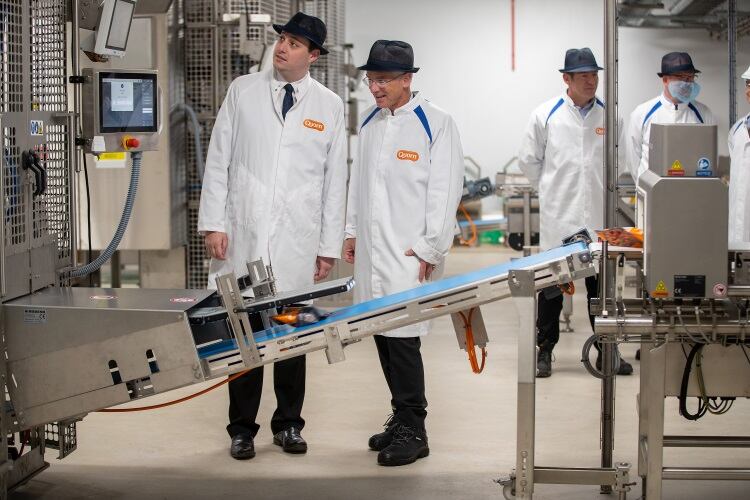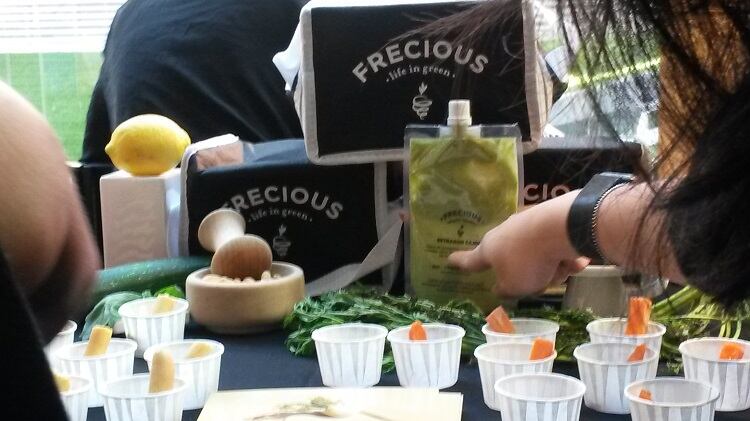If there’s one common theme from the six trends Tyson Trendtellers Council has spotted, it’s that consumers expect more out of their food and more from the companies making their food, said Jennifer Bentz, senior vice president, R&D, innovation, and insights, at Tyson Foods.
1. Proactive and personalized wellness
As consumers take a more holistic approach to their wellness, they are looking to foods with certain health goals in mind, especially in the areas of improved mental focus, beauty, and digestion.
“In the past it was very focused on taking supplements, where now it’s people really thinking about their food choices and using food to give them energy, focus, sharper thinking – the lines are blurring,” Bentz told FoodNavigator-USA.
In the area of brain health, a market projected to hit $11.6bn by 2024 (according to Research & Markets), the food and beverage space has been taking cues from the nootropic dietary supplement space incorporating unique ingredients such as dandelion greens and jicama into their product formulations.
“The food industry—from manufacturers to retailers to restaurants—will offer more of these targeted, health-inspiring food options in response to current trends like detoxing and boosting energy,” Tyson said.
Proactive wellness will also involve greater personalization as advanced analytics that leverage technologies such as DNA testing allow people to adjust and customize food products in real-time, Tyson added.
2. Transparency takes hold
Consumers are asking more questions about their food such as where it came from, how it was processed, and how far it had to travel to get to the supermarket, and getting instant answers to these questions is right around the corner, according to Tyson.
Data from Nielsen and Label Insight found that 39% of shoppers today would be willing to switch brands and products that feature more transparent labels.
The concept of tracking food from farm to fork, which first took hold with smaller brands, will become a core focus for big food companies explore technologies such as blockchain to provide consumers with answers to their questions around sourcing and food safety.
Tyson Foods has invested in software company FoodLogiQ to test the capabilities of blockchain as a food traceability tool with the goal of providing its customers with the on-demand capability for tracking shipments, paying invoices, and identifying where food came from. Tyson is also part of the Blockchain Center of Excellence at the University of Arkansas, which is encouraging blockchain research.
3. More protein in more forms
The demand for protein isn’t going anywhere, but what is changing is that consumers are seeking out more alternative protein sources including plant-based and animal-based protein that uses previously cast-aside piece pieces of the animal.
“The USDA found that protein demand in 2018 was at an all-time high and we’re anticipating that’s only going to climb,” Bentz said.
“As you think about what that means, sustainably sourcing the world’s protein is going to take many different forms and animal protein is always going to be important in people’s diets.”
As a business, Tyson has made investments into alternative sources of protein including plant-based meat alternative company Beyond Meat and cell cultured meat firm Memphis Meats.
Bentz added that protein as it relates to food waste will become more important to consumers and that large food companies have to use their scale to drive sustainability issues.
“Food waste is something our industry has to tackle – period. And it’s got to be big companies that take this on because it’s a huge issue,” she said.
Through its innovation lab Tyson Foods released its ¡Yappah! protein crisps using upcycled chicken breast trim and has partnered with Toronto-based Flashfood to provide consumers with boxes of high quality surplus food that would normally go to waste.
4. Food meets tech
As the intersection of food, technology and people expands with the Internet of Things, food brands are seeking new ways of leveraging tech to better connect with buying audiences, which has led to the rise of smart kitchen devices, recipe apps, and other gadgets.
Earlier this year, Tyson made an investment in Tovola, a Chicago-based food startup of smart countertop steam ovens that make fresh ready-to-cook meals.
“Tech is huge and a big piece of where the food industry is growing. With all the technology advancements and all the gadgets in our kitchen; it’s really shortening the space between the recipe and cooking,” Bentz said.
E-commerce giants such as Amazon/Amazon Fresh and Jet.com are also playing role in the tech revolution of food by changing how people buy food, both shelf stable and fresh.
“We are just now seeing how this trend is driving brands to fundamentally change products, packaging and distribution for ecommerce channels, including greater customization,” Tyson said.
5. Food as a form of self-expression
Today, consumers are aligning with companies that represent similar values to their own. For Gen Z, in particular, food is more than sustenance – it is a symbol of their personal values and a form of self-expression, according to Tyson.
Clean eating is important to them and their quality of life and they seek out fresh, sustainable, and authentic foods.
“In 2019, expect food brands, much like fashion labels, to come with their own cachet and social currency. The brand of bars a Gen Zer carries in their gym bag and the flavored water they tote to class can say as much about ‘brand me’ as the logo on their t-shirt and the swoosh on their sneakers,” Tyson said.
6. Global flavors and the rise of the ‘kid foodie’
Leading the charge for unexpected and global flavors in food are millennials who are 52% more likely than consumers over the age of 35 to visit restaurants with “innovative offerings”, according to Tyson.
Recognizing this demand, household brands are now offering more new and innovative flavors and pairings than ever before. They are capitalizing on this trend because both home cooks and eat out audiences are willing to spend more on meals that feature these expanded flavors.
Kids are influencing this trend as their palates have become more open to different types of flavors and cuisines compared to previous generations.
“This will continue to drive food brands to think outside the box. The impact of kid foodies is already hitting the school lunch room, where even menu items like spicy Korean BBQ, Thai lemongrass chicken and garlic buffalo chicken drumsticks are becoming more standard fare,” Tyson noted.




